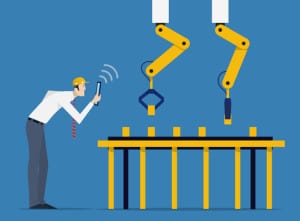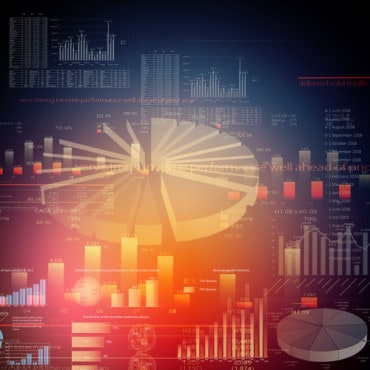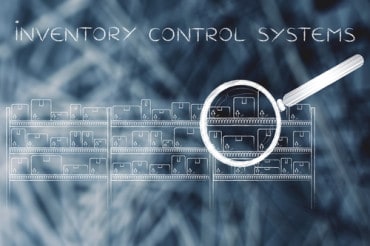
The Industrial IoT is accelerating, thanks to low-cost sensors, growing cloud computing capacity and evolving enterprise software. Here’s what manufacturers need to know
Manufacturers leading the way in digital transformation need to be more Internet of Things (IoT) savvy. The fates of the two initiatives are inextricably linked, a new study confirms. At the same time, an enterprise transformation effort is required to achieve critical mass with IoT.
That’s the gist of a new study of 200 manufacturing executives by IFS, which tracks the progress of IoT and digital transformation in the industrial sector. The prognosis: IoT and digital transformation are a serious part of today’s manufacturing scene – and manufacturers had IoT-like deployments long before the concept came into popular usage.
Industrial IoT on the rise
“Industrial companies were in many ways early adapters of IoT, and a rudimentary IoT environment has flourished for decades as manufacturing plants, utilities and other heavy industries came to rely on sensored equipment for industrial automation and condition-based maintenance systems,” the survey’s authors state.
[ Related: How to forge a Real-Time Link Between Manufacturing and Actionable Data ]
Now, growth in the Industrial IoT is accelerating, thanks to the falling cost of adding sensors to equipment, growing cloud computing capacity to handle data from a large number of sensors, and evolving enterprise software capable of analyzing and operationalizing data from networked devices.
“Manufacturing operations departments, maintenance departments and field service organizations are also finding that data from these connected devices can enable them to increase value to internal or external customers, reduce cost and even create new product or service offerings,” the IFS reports adds.
“Often, data from these connected devices is consumed strictly on the plant floor — either by networking programmable logic controllers (PLCs) to each other, to a supervisory control and data acquisition (SCADA) network or to other point solutions. The greater potential for IoT to fully impact industrial organizations though will take place as enterprise software like enterprise resource planning (ERP), enterprise asset management (EAM) and, increasingly, field service management, exposes this data in ways that adds value to customers and other stakeholders.”
[ Related: Why the Industrial IoT Needs an Open-Source Edge Platform ]
Here are four key findings from the IFS survey:
IoT and digital transformation closely related in industrial companies
Companies leading the way in digital transformation were more likely to be delivering more advanced IoT use cases,” the study’s authors say. At the same time, executives who consider their companies to be IoT leaders without the same degree of digital transformation underpinning their efforts were not as inclined to be leading the way. “IoT Leaders were more likely to sensor between 11 to 70 percent of their equipment,” the IFS team states. “But they are still less likely than DT Leaders to be sensoring a very high percentage of their production equipment.”
Enterprise software must facilitate IoT
“Survey respondents who said their enterprise software did a good job preparing them for digital transformation were more likely to report being involved in IoT use cases,” the study finds. Digital transformation leaders more frequently reported being involved in IoT use cases such as connected field service; asset performance management; operational efficiency; and business intelligence/reporting. “Each of these IoT use cases require not only sensored, connected devices, but more advanced integration between those devices and enterprise applications.”
[ Related: Your guide to top tech events ]
Aftermarket service benefits are being extracted from IoT
“Sensors affixed to single, embedded components in equipment — like a compressor or a servo— represent the entry level for field service IoT. The next level of sophistication is an entire machine or other asset that has multiple sensors to deliver insights on equipment health, total usage or other metrics. Roughly half of respondents reported leveraging each of these two IoT approaches.”
Predictive maintenance most prevalent planned expenditure
“Regardless of sophistication level, respondents planned to invest the most in condition-based or predictive maintenance,” the survey finds. IoT leaders plan expenditures in process automation, while digital transformation leaders are significantly more likely to plan investments in field service management; monitoring performance against SLAs; asset performance management; and asset operational efficiency.




























